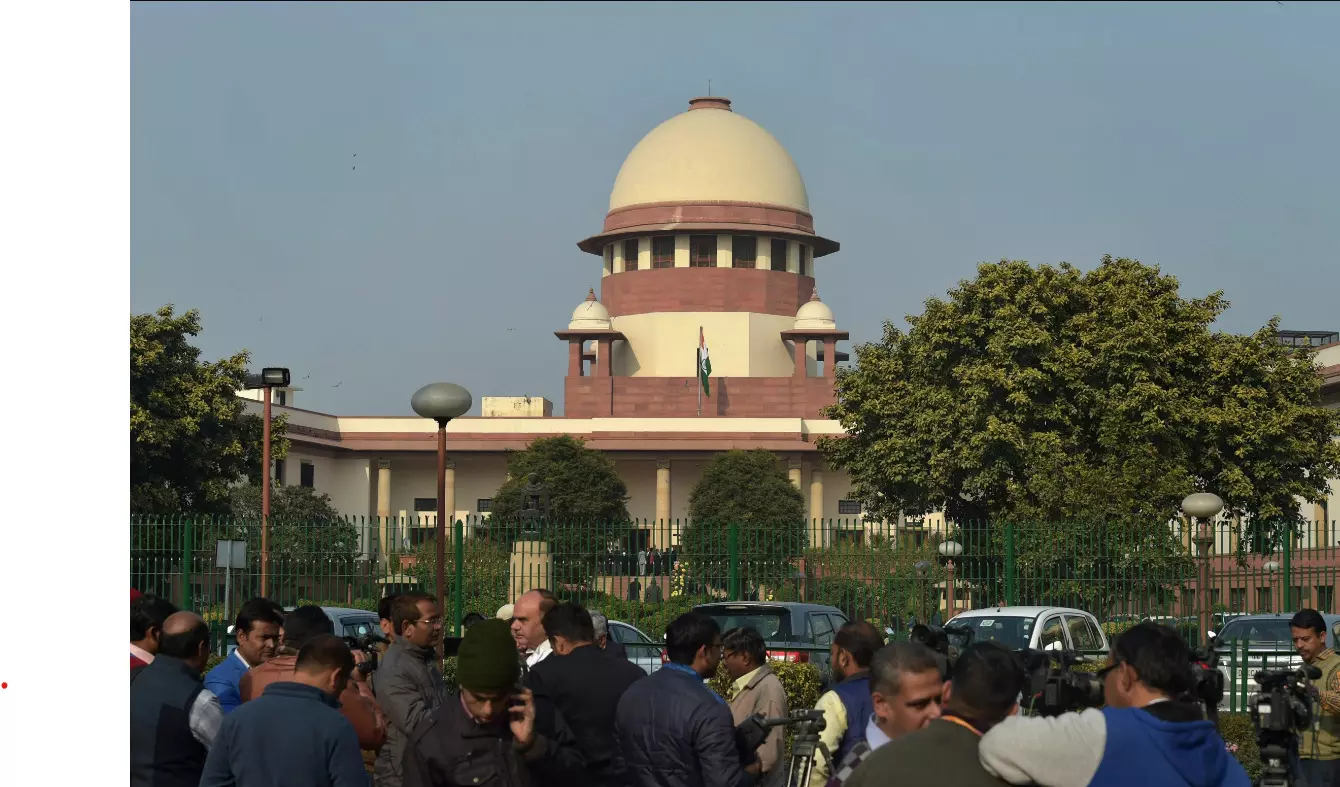
New Delhi, April 25 -- There are certain aspects of law and constitutionality that do not fall under the purview of either the white or the black; they are more often in the grey zone. It is under these circumstances that the role of institutions like the Supreme Court takes the centre stage. Currently, the apex court is dealing with a crucial question: does privately-owned property hold a place in the realm of "material resources of the community" as outlined in Article 39(b) of the Constitution of India? Chief Justice DY Chandrachud, leading a nine-judge bench, cautioned against a simplistic interpretation that would exclude private property from the purview of Article 39(b).
At the same time, he denounced the "extreme socialist view" which "attributes to property, a notion of commonality"-leaving nothing exclusive to the individual. The CJI highlighted the change India's legal-constitutional paradigm has undergone, from either the extreme capitalist perspective or the extreme socialist perspective.
Perhaps as a middle path to these extremes, the Supreme Court highlighted the Gandhian principle of trusteeship, which is one of the philosophes on which DPSP is based. The court held that the concept of trusteeship entails not just holding the property for future generations but also for the wider community.
However, it may be recalled that the Gandhian philosophy is not the sole underpinning of DPSP. It is also premised on socialist and liberal-intellectual principles. In fact, Article 39(b) is more a product of socialist philosophy. Nevertheless, it is incumbent upon the Supreme Court to reinterpret the constitutional provisions in a manner that syncs with changing socio-political dynamics. The court has emphasised on the need for contextual analysis in determining the applicability of Article 39(b). It also brought to notice the historical context in which the Constitution was framed. The bench underscored the Constitution's overarching objective of facilitating social transformation and addressing societal inequalities.
It may be worth noting here that over the decades the stark lines delineating dominant ideologies have blurred - more often benefitting the humanity. Be it socialism, capitalism, communism, or any other 'ism', they have identified their shortcomings and were compelled at some point or other to borrow from the ideologies they were pitted against, politically.
India, which opted for a mixed path between socialism and capitalism at the dawn of its independence, is reshuffling the balance as the circumstances change. As things stand today, there is still a glaring inequality in Indian society, necessitating fair distribution of wealth, income, and opportunities. At the same time, India is expected to take huge developmental leaps in immediate and medium term. Balancing between the two aspects is the need of the hour. The distinction between community and private property, as highlighted by the Supreme Court, seems like an attempt to strike a similar balance.
As the proceedings continue, it is evident that the Supreme Court's examination of wealth redistribution within the framework of Article 39(b) signifies a critical judicial inquiry into the intersection of private property rights and the common good. With multiple petitions under consideration, including the lead petition filed by the Property Owners Association of Mumbai, the bench's deliberations hold profound implications for the future trajectory of social and economic justice in India.
Published by HT Digital Content Services with permission from Millennium Post.
